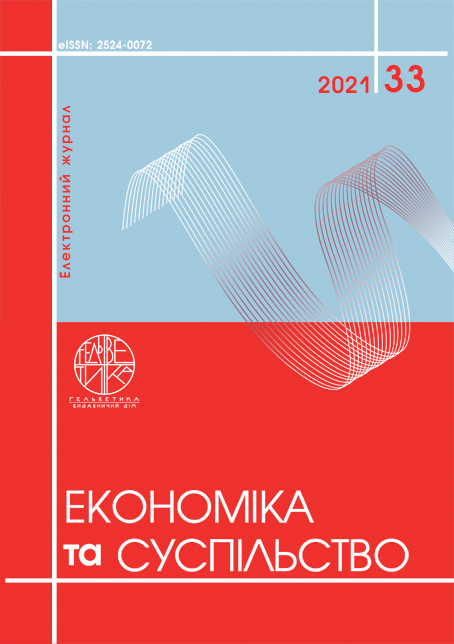BRICS CO-COOPERATION AS A NEW FORMAT OF INTEGRATION ASSOCIATION
Abstract
The article is devoted to the study of transregional cooperation in the field of international economic relations at the level of the BRICS, which is becoming increasingly important due to the potential and status of actors involved in these processes. The aim of the article is to analyze the cooperation of the BRICS countries as a new format of integration association and determine the prospects for its development. The article considers the process of transregionalism as a new format of integration of countries, defines its essence and typology. The BRICS transregional association has been described and its resource base identified. The economic and political potential of the union is analyzed. The geostrategic positions of the BRICS countries, their role and functions in the system of international economy are determined. The spheres of interaction of the member countries of the association are outlined. The forecast indicators of growth rates of economic development of the BRICS countries in the long run are given. It is determined that the accumulated potential of private consumption and investment in the member countries of the union will help maintain a positive trend in macroeconomic indicators, even in the context of deteriorating foreign trade in the medium term in the context of the pandemic. The readiness of the BRICS countries to respond flexibly to the changing situation in the world and to show unity in the face of new challenges and threats was revealed. The directions of the monetary policy of the association, aimed at reducing public debt and increasing international reserves, are outlined. The place of the BRICS in the architecture of international relations and its position on the leading interstate platforms of interaction is determined. Possible prospects and risks of internal and external cooperation of the BRICS countries were assessed. The dependence of the BRICS potential on the direct or indirect influence of the states cooperating with Brazil, Russia, India, China and the Republic of South Africa in the framework of other integration projects and bilateral relations is described. The directions of strengthening the mechanisms of internal interaction of the group and seeking agreement on key issues of the global order are identified.
References
На пороге второго десятилетия БРИКС. Сборник статей / Отв. ред. В.Г. Хорос. Москва : ИМЭМО РАН, 2017. 83 с.
Хейфец Б. Перспективы институционализации БРИКС. Вопросы экономики. 2015. № 8. С. 25–42.
Paul T. V. Recasting Statecraft: International Relations and Strategies of Peaceful Change. International Studies Quarterly. 2017. Vol. 61, No. 1, P. 1–13.
BRICS Joint Statistical Publication 2021. SNAPSHOT. URL: https://brics2021.gov.in/brics/public/uploads/docpdf/getdocu-64.pdf
Бордачев Т., Панова В, Суслов Д. БРИКС и пандемия сотрудничества. Доклад Международного дискуссионного клуба Валдай. Апрель 2020. URL: https://www.globalaffairs.ru/wp-content/uploads/2020/04/doklad_briks-i-pandemiya-sopernichestva.pdf
Kastner S. L, Saunders P. C. Is China a Status Quo or Revisionist State? Leadership Travel as an Empirical Indicator of Foreign Policy Priorities. International Studies Quarterly. 2012. Vol. 56. P. 163–177.
Tkachenko S. L. BRICS and Development Alternatives, Rekindling the Strong State in Russia and China: Domestic Dynamics and Foreign Policy Projections, ed. by Bianchini, S. and Fiori, A., Leiden, Boston: Brill. 2020, Р. 271–297.
Horos, V.G. (Еd). (2017) Na poroge vtorogo desyatiletiya BRIKS [On the verge of the second decade of the BRICS]. Sbornik statej. Moskva: IMEMO RAN. 83 p. [in Russian].
Hejfec, B. (2015) Perspektivy institucionalizacii BRIKS [Prospects for the institutionalization of BRICS]. Voprosy ekonomiki, no 8, рр. 25–42.
Paul, T. V. (2017) Recasting Statecraft: International Relations and Strategies of Peaceful Change, International Studies Quarterly, vol. 61, no. 1, pp. 1–13.
BRICS Joint Statistical Publication 2021. SNAPSHOT. (2021) Available at: https://brics2021.gov.in/brics/public/uploads/docpdf/getdocu-64.pdf
Bordachev, T., Panova, V., Suslov, D. (2020) BRIKS i pandemiya sotrudnichestva [BRICS and the pandemic of cooperation]. Doklad Mezhdunarodnogo diskussionnogo kluba Valdaj. Aprel. Available at: https://www.globalaffairs.ru/wp-content/uploads/2020/04/doklad_briks-i-pandemiya-sopernichestva.pdf
Kastner, S. L., Saunders, P. C. (2012) Is China a Status Quo or Revisionist State? Leadership Travel as an Empirical Indicator of Foreign Policy Priorities. International Studies Quarterly, vol. 56, pp. 163–177.
Tkachenko, S. L. (2020) BRICS and Development Alternatives, Rekindling the Strong State in Russia and China: Domestic Dynamics and Foreign Policy Projections. Bianchini, S. and Fiori, A., Leiden (Eds.), Boston: Brill, pp. 271–297.


